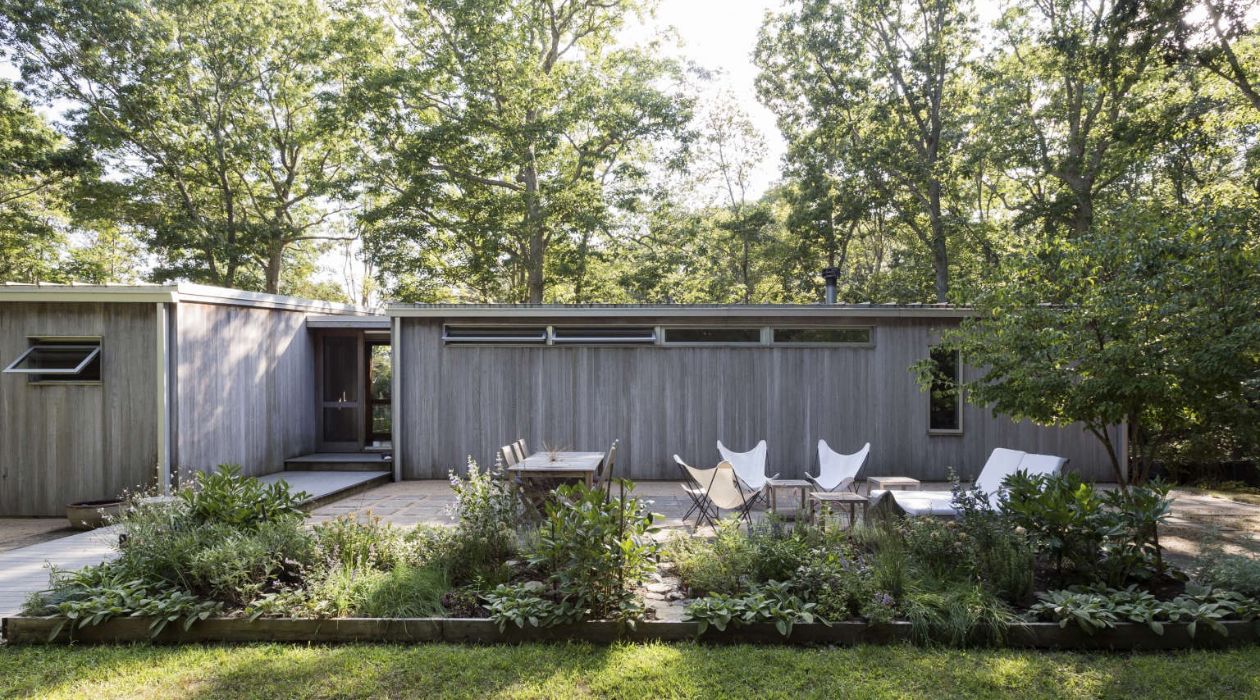

Articles
Build An Outdoor Room This Weekend
Modified: January 15, 2024
Looking for articles on how to build an outdoor room? Check out our guide and get started on creating your own outdoor oasis this weekend!
(Many of the links in this article redirect to a specific reviewed product. Your purchase of these products through affiliate links helps to generate commission for Storables.com, at no extra cost. Learn more)
Introduction
Creating an outdoor room is a fantastic way to extend your living space and make the most of your outdoor area. Whether you have a large backyard or a compact balcony, transforming it into a functional and inviting space can provide endless possibilities for relaxation, entertaining, and enjoying nature.
By strategically designing and furnishing your outdoor room, you can create a peaceful retreat, a vibrant social hub, or a combination of both. With a little planning and some weekend DIY projects, you can have a beautiful outdoor space that reflects your personal style and enhances the overall appeal of your home.
In this article, we will explore the step-by-step process of building an outdoor room that suits your needs and preferences. From choosing the right location to adding finishing touches, we will cover everything you need to know to transform your outdoor area into a functional and stunning space.
So grab your tools, put on your creative hat, and let’s get started on building your very own outdoor room this weekend!
Key Takeaways:
- Create a personalized outdoor room by carefully choosing the right location, purpose, layout, furniture, and decorations. Infuse your unique style and personality to make it a true extension of your indoor living space.
- Enhance your outdoor room with practical and aesthetic elements such as a solid foundation, roof or canopy, privacy and shade solutions, lighting fixtures, water features, and personalized finishing touches. Transform your outdoor space into a tranquil and inviting sanctuary.
Choosing the Right Location
When it comes to creating an outdoor room, the first step is to choose the right location. Consider the natural elements such as sunlight, wind direction, and proximity to your indoor living space. Here are some factors to keep in mind:
- Sunlight: Select an area that receives an adequate amount of sunlight throughout the day. This will ensure that you can enjoy your outdoor room during various times of the day.
- Wind Direction: Take note of the predominant wind direction in your area. It’s best to position your outdoor room in a spot that is shielded from strong winds to create a more comfortable and enjoyable space.
- Proximity to Indoor Living Space: If possible, choose a location that is easily accessible from your indoor living space. This will encourage frequent use and create a seamless flow between indoor and outdoor areas.
Additionally, consider the privacy of the area. If you have adjacent neighbors or a busy street nearby, you may need to implement privacy screens or hedges to create a more secluded atmosphere.
Furthermore, assess the ground condition of the potential location. Ideally, you want a level and stable surface to build your outdoor room. If your desired spot has uneven terrain, you may need to level the area or consider building a raised deck or platform.
Lastly, think about the overall aesthetics and aesthetics of the location. Look for a spot that offers a visually pleasing backdrop, such as a garden, trees, or a scenic view. This will add depth and enhance the ambiance of your outdoor room.
By carefully considering these factors, you can choose the perfect location for your outdoor room. Once you have decided on the ideal spot, you can move on to the next step of the process: determining the purpose of your outdoor room.
Determining the Purpose of the Outdoor Room
Before diving into the design and layout of your outdoor room, it’s important to determine its purpose. What do you envision using the space for? Identifying the main function or functions of the outdoor room will guide your decision-making process and ensure that the final result meets your specific needs.
Here are some common purposes for an outdoor room:
- Relaxation and Tranquility: If you crave a serene sanctuary to unwind and find peace, consider designing your outdoor room as a tranquil retreat. Incorporate comfortable seating options like lounge chairs or hammocks, add soft lighting fixtures, and surround the space with calming elements such as water features or greenery.
- Entertainment and Socializing: If you enjoy hosting gatherings or simply love spending time with family and friends, prioritize creating an outdoor room that fosters socialization. Opt for ample seating arrangements like outdoor sofas or dining sets, incorporate a bar or a barbecue area, and consider installing a sound system for music and entertainment.
- Workspace or Studio: If you’re an artist, writer, or simply need a dedicated space to work from home, consider transforming your outdoor room into a functional workspace or studio. Incorporate a sturdy table or desk, provide proper lighting, and organize storage solutions to keep your supplies and equipment conveniently within reach.
- Play Area for Children: If you have children, designing an outdoor room that caters to their needs and provides a safe play area can be a great investment. Consider adding play structures, a sandbox, or a small sports court. Make sure to incorporate adequate shade and keep safety measures in mind.
It’s important to note that your outdoor room can serve multiple purposes or evolve over time. For instance, you may want to create a space that is both relaxing and suitable for entertaining. By determining the primary purpose or purposes of your outdoor room, you can make informed decisions about the layout, furniture, and decorations that will best support those intentions.
Once you have established the purpose of your outdoor room, you can move on to the exciting step of designing the layout.
Designing the Layout
The layout of your outdoor room plays a crucial role in maximizing its functionality and visual appeal. When designing the layout, you want to create a space that allows for easy movement, optimal use of the available area, and a harmonious arrangement of furniture and decorations.
Here are some tips for designing an effective layout for your outdoor room:
- Consider the size and shape of the space: Take precise measurements of the area and consider any architectural or landscaping elements that may affect the layout. This will help you determine the appropriate placement and configuration of furniture and other components.
- Create distinct zones: If your outdoor room is large enough, consider dividing it into different zones to cater to various activities or functions. For example, you can have a seating area for relaxation, a dining area for meals, and a separate area for gardening or play. This allows for efficient use of space and makes the outdoor room feel more organized.
- Allow for flow and accessibility: Ensure that there is ample space for movement throughout the outdoor room. Avoid overcrowding furniture or obstructing pathways, as this can make the space feel cramped. Designate clear paths and consider the placement of doors or access points to ensure easy entry and exit.
- Balance aesthetics and practicality: Pay attention to the visual balance and symmetry of the layout, considering both the practical functions and the overall aesthetics. Position larger furniture pieces as anchor points and accessorize with smaller elements to create a visually pleasing arrangement.
- Consider the view: Take advantage of any scenic views or focal points in the area. Position seating or lounging areas to make the most of these views and create a captivating focal point within the outdoor room.
- Maximize functionality: Ensure that the layout allows for the efficient use of space and supports the intended purposes of the outdoor room. For example, if you plan to have an outdoor kitchen or bar area, make sure it is conveniently located and equipped with the necessary amenities.
Remember, the layout of your outdoor room can be flexible and evolve over time. Once you have a basic plan in place, you can experiment with different arrangements and make adjustments as needed. The goal is to create a layout that is both functional and visually appealing, allowing you to make the most of your outdoor space.
With the layout finalized, it’s time to move on to the next step: selecting the furniture and decorations for your outdoor room.
Selecting the Furniture and Decorations
Choosing the right furniture and decorations is essential for creating a comfortable and inviting outdoor room. The furniture should not only be visually pleasing but also durable and able to withstand outdoor conditions. Here are some tips for selecting the perfect furniture and decorations:
1. Consider the function: Think about how you plan to use the outdoor room and select furniture that aligns with those activities. If you want a space for dining, choose a sturdy outdoor dining set. For a relaxation area, opt for comfortable seating such as lounge chairs or a sectional sofa.
2. Evaluate the material: Outdoor furniture comes in a variety of materials, each with its own advantages and maintenance requirements. Common choices include wicker, aluminum, teak, and wrought iron. Consider your climate and the level of maintenance you are willing to undertake when choosing the material for your furniture.
3. Prioritize comfort: The overall comfort of your outdoor room is crucial. Look for furniture with cushions or pillows for added comfort. Make sure the seating is ergonomically designed and provides adequate support.
4. Select versatile pieces: Opt for furniture that can serve multiple purposes or be easily rearranged. This allows you to adapt the layout and functionality of your outdoor room as needed. For example, choose a coffee table that can also be used as a dining surface when needed.
5. Incorporate weather-resistant materials: Since your outdoor room will be exposed to the elements, it’s essential to choose furniture and decorations that can withstand weather conditions. Look for weather-resistant fabrics, UV-resistant coatings, and rust-resistant materials.
6. Pay attention to the scale: Consider the size of your outdoor room and choose furniture that fits well without overwhelming the space. Oversized furniture can make the area feel cramped, while small-scale furniture may appear insignificant.
7. Add personal touches: Enhance the visual appeal of your outdoor room by incorporating decorations and accessories. Consider adding throw pillows, outdoor rugs, art pieces, and potted plants to infuse your own style and personality into the space.
8. Coordinate colors and patterns: Choose a color palette or theme that complements your outdoor space and reflects your personal style. Coordinate the colors and patterns of furniture, cushions, and decorations to create a cohesive and harmonious look.
9. Don’t forget about storage: Invest in storage solutions to keep your outdoor room organized and free from clutter. Opt for furniture pieces with built-in storage compartments or consider adding outdoor storage boxes or sheds.
By carefully selecting furniture and decorations that align with your needs, style, and outdoor conditions, you can create a visually appealing and functional outdoor room that enhances your overall outdoor experience.
Next, we’ll explore the practical aspects of building a foundation or deck for your outdoor room.
Building a Foundation or Deck
Creating a solid foundation or deck is essential for the stability and longevity of your outdoor room. It provides a level surface for your furniture and sets the stage for the overall aesthetic of the space. Here are the steps to consider when building a foundation or deck:
1. Determine the type of foundation: Depending on your space, you may choose to build a traditional foundation, such as a concrete slab or paver base, or opt for a deck platform made from wood or composite materials. Consider factors such as budget, terrain, and your desired aesthetic when making this decision.
2. Prepare the area: Clear the area of any vegetation, rocks, or debris. Ensure that the ground is level by removing any bumps or unevenness. This will provide a smooth and stable surface for the foundation or deck.
3. Mark the layout: Use stakes, string, or marking paint to outline the dimensions of your foundation or deck. This will help you visualize the space and make accurate measurements for construction.
4. Excavation (if necessary): If you plan to build a traditional foundation, you might need to excavate the area to a certain depth. This will provide a stable base for the foundation. Consult local building regulations or a professional if you are unsure about the excavation process.
5. Build the foundation: For a concrete foundation, prepare the formwork and pour the concrete into the designated area. Follow the appropriate techniques and allow sufficient time for curing. If you are building a deck, construct the frame using pressure-treated wood or composite materials according to the design specifications.
6. Install support posts and beams: If you are building a deck, install support posts and beams to provide structural stability. Ensure that they are properly anchored and level to support the weight of the deck and furniture.
7. Attach the decking materials: Whether you are using wood, composite, or other decking materials, follow the manufacturer’s instructions to properly attach and secure the decking to the frame. Use appropriate fasteners and spacing techniques to ensure a stable and visually pleasing surface.
8. Finish the foundation or deck: Once the main construction is complete, apply protective finishes such as sealant, stain, or paint to enhance the durability and aesthetics of the foundation or deck. This step will help protect the wood from moisture, UV rays, and other outdoor elements.
9. Consider additional features: Depending on your preferences and budget, you may want to add additional features to your foundation or deck. This could include built-in seating, planters, or decorative elements that enhance the functionality and visual appeal of the outdoor room.
Building a solid foundation or deck for your outdoor room is a crucial step in creating a long-lasting and enjoyable space. By following these steps and utilizing appropriate materials and techniques, you can ensure that your foundation or deck provides a sturdy and beautiful platform for your outdoor room.
Next, let’s explore how to add a roof or canopy to your outdoor room to provide shelter from the elements.
Adding a Roof or Canopy
Adding a roof or canopy to your outdoor room is a great way to provide shade and protection from the elements, allowing you to enjoy your space even during inclement weather. Here are some options to consider when deciding on the best roof or canopy for your outdoor room:
1. Permanent Roof: If you have a structure such as a pergola or gazebo in your outdoor room, you can consider adding a permanent roof. This can be in the form of a solid roof made from materials like metal or polycarbonate panels. A permanent roof provides a more permanent and sturdy option for protection and can be customized to match the style of your outdoor room.
2. Retractable Awning: A retractable awning is a versatile option that allows you to extend or retract the covering as needed. This provides flexibility in adjusting the amount of shade and can be especially useful if your outdoor room receives varying amounts of sunlight throughout the day. Retractable awnings come in different sizes and materials to suit your needs.
3. Shade Sail: A shade sail is a modern and stylish option for adding shade to your outdoor room. These triangular or rectangular fabric panels are stretched and secured to anchor points, creating a visually appealing canopy. Shade sails are available in a variety of colors and sizes, allowing you to customize the look of your outdoor room.
4. Umbrella: An umbrella is a classic and portable option for creating shade in your outdoor room. Umbrellas are available in various sizes, shapes, and designs to suit different preferences and space requirements. They can be easily adjusted and moved as needed, providing flexibility for different seating or dining arrangements.
5. Canopy Tent: If you’re looking for a temporary or portable option, a canopy tent can be a practical choice. These tents come in different sizes and styles, and they can be easily set up and taken down as needed. Canopy tents provide the flexibility to create shade in different areas of your outdoor room or even for special occasions and events.
6. Green Roof: For a more eco-friendly option, you could consider a green roof. This involves creating a rooftop garden or planting vegetation on top of your outdoor room. Green roofs provide not only shade but also insulation, adding a unique and aesthetically pleasing touch to your outdoor space.
When choosing a roof or canopy, consider factors such as the size and layout of your outdoor room, your climate, and your desired level of protection. It’s also important to ensure that the chosen option complements the overall style and design of your outdoor room.
Whichever option you choose, adding a roof or canopy to your outdoor room will enhance its functionality and create a comfortable and inviting space that can be enjoyed year-round.
Next, let’s explore how to enhance privacy and shade in your outdoor room.
Consider using outdoor rugs to define the space and add a cozy feel to your outdoor room. Rugs can help tie the space together and create a welcoming atmosphere.
Enhancing Privacy and Shade
Creating a sense of privacy and shade in your outdoor room is essential for a comfortable and relaxing experience. Here are some effective ways to enhance privacy and provide shade in your outdoor space:
1. Privacy Screens: Install privacy screens or partitions to create a secluded and intimate atmosphere in your outdoor room. You can use materials such as wood, bamboo, metal, or fabric to build or hang privacy screens around the perimeter of your space. These screens can also add an element of style and visual interest to your outdoor room.
2. Fencing: If you have a larger outdoor area, consider installing a fence to enclose the space and provide privacy. Fences not only create a private retreat but can also serve as a backdrop for climbing plants or decorative elements.
3. Outdoor Curtains: Hang outdoor curtains to add both privacy and shade to your outdoor room. Choose weather-resistant fabric and install curtain rods or hooks to easily open or close the curtains as desired. Curtains provide a touch of elegance and versatility to your outdoor space.
4. Pergolas: Build a pergola over your outdoor room to provide both shade and privacy. A pergola can be further enhanced by adding climbing plants or drapes to create a lush and secluded environment. Additionally, you can install retractable panels or shades to adjust the level of shade or privacy as needed.
5. Plant a Green Screen: Use plants and greenery strategically to create a natural and visually appealing privacy barrier. Choose tall shrubs, hedges, or climbers that can grow over time and provide shade and privacy to your outdoor room. Make sure to select plants that thrive in your climate and require low maintenance.
6. Shade Structures: Install shade structures such as shade sails, awnings, or umbrellas to block direct sunlight and create a comfortable shaded area. These structures not only provide relief from the sun’s rays but also add a touch of elegance and style to your outdoor room.
7. Vertical Gardens: Create a vertical garden by installing planters or trellises on walls or fences. Select plants that offer privacy, such as tall grasses or climbing vines, to create a natural green wall that adds a sense of seclusion to your outdoor space.
8. Outdoor Blinds or Shades: Install outdoor blinds or shades to block sunlight and provide privacy when needed. These can be operated manually or using remote controls, allowing you to adjust the level of shade and privacy easily.
By incorporating these privacy and shade-enhancing elements into your outdoor room, you can create a secluded and refreshing space that offers both comfort and tranquility.
Next, let’s explore how to illuminate your outdoor room with the right lighting fixtures.
Installing Lighting Fixtures
Proper lighting is essential for creating a welcoming and functional outdoor room. It enhances the ambiance, maximizes the use of the space, and ensures safety during nighttime activities. Here are some tips for installing lighting fixtures in your outdoor room:
1. Determine the lighting needs: Assess the different areas and functions of your outdoor room to determine where lighting is needed. Consider areas such as seating areas, pathways, dining areas, and any interesting focal points or decorative elements that you want to highlight.
2. Layer the lighting: Use a combination of different lighting elements to create a layered and versatile lighting design. This includes ambient lighting for overall illumination, task lighting for specific activities like cooking or reading, and accent lighting to highlight architectural features or landscaping.
3. Choose appropriate fixtures: Select lighting fixtures that are specifically designed for outdoor use and can withstand the elements. Opt for fixtures made from materials such as metal or durable plastics that are resistant to moisture, temperature changes, and UV rays.
4. Install pathway lighting: Ensure safety and guide people through your outdoor room by installing pathway lighting. This can be achieved with the use of stake lights, recessed lighting, or solar-powered LED lights. Place them along walkways, steps, and entrances to create a well-lit and inviting path.
5. Install overhead lighting: Depending on the design and layout of your outdoor room, consider installing overhead lighting fixtures. This can be in the form of overhead pendant lights, chandeliers, or flush-mount fixtures. These lights provide a warm and inviting glow and can be a focal point of your outdoor room.
6. Utilize string lights: String lights or fairy lights are popular options for adding a magical and cozy ambiance to outdoor spaces. Hang them above seating areas, along fences, or across pergolas to create a soft and enchanting glow. They are available in various lengths, colors, and styles, allowing you to personalize the lighting design.
7. Use wall-mounted lights: Install wall-mounted lights to provide both functional and decorative lighting. These lights can be placed on exterior walls, columns, or pillars to create a warm and inviting atmosphere. They can also highlight architectural features and textures.
8. Consider energy-efficient options: Opt for energy-efficient lighting options such as LED lights or solar-powered fixtures. These not only reduce your energy consumption but also provide long-lasting and environmentally friendly lighting solutions. They are available in various styles and can be easily integrated into your outdoor room.
9. Install dimmers: Incorporate dimmers for adjustable lighting levels. This allows you to set the mood and control the brightness according to different activities or preferences. Dimmers are particularly useful for creating a more intimate atmosphere during gatherings or relaxing evenings.
By carefully planning and selecting the right lighting fixtures, you can enhance the beauty, functionality, and ambiance of your outdoor room. Lighting makes a significant difference in how you can enjoy your space, whether it’s for entertaining guests, having a quiet evening alone, or simply enjoying the beauty of your outdoor surroundings.
Next, let’s explore how to create an outdoor kitchen or barbecue area within your outdoor room.
Read more: Porches & Outdoor Rooms
Creating an Outdoor Kitchen or Barbecue Area
Having an outdoor kitchen or barbecue area can take your outdoor room to the next level, allowing you to cook and dine al fresco and entertain guests with ease. Here are some steps to help you create a functional and stylish outdoor kitchen or barbecue area:
1. Determine the layout: Consider the available space in your outdoor room and envision the layout of your outdoor kitchen or barbecue area. Designate areas for cooking, preparation, and storage, ensuring that they are conveniently located and easily accessible.
2. Choose the cooking equipment: Select the cooking equipment that best suits your needs and preferences. This can include a built-in grill, a smoker, a pizza oven, or a combination of these appliances. Consider factors such as the size of the equipment, the fuel source (gas, charcoal, or electric), and any additional features you may desire.
3. Plan the countertop space: A sufficient amount of countertop space is essential for food preparation, serving, and storage. Choose durable and weather-resistant materials such as granite, stainless steel, or concrete for the countertop. Ensure you have enough space for food preparation, plating, and accommodating small appliances.
4. Incorporate storage solutions: Install plenty of storage options for your outdoor kitchen. This can include cabinets, drawers, or shelving units to keep your utensils, cooking tools, and other essentials organized and protected from the elements.
5. Consider a sink and water source: Adding a sink to your outdoor kitchen can greatly enhance its functionality. It allows for easy cleanup and food preparation. Ensure you have access to a water source and proper drainage before installing a sink. If a permanent water source is not feasible, consider portable options or nearby access to water.
6. Provide seating and dining options: Add a dining area near your outdoor kitchen or barbecue area to create a seamless flow between cooking and eating. Incorporate a table and chairs or consider built-in seating options such as an outdoor bar with stools. Make sure to account for the number of people you plan to accommodate.
7. Install proper ventilation: Good ventilation is crucial in an outdoor kitchen to dissipate smoke, fumes, and heat. Consider installing a range hood or positioning your outdoor kitchen in an area with proper ventilation to ensure a comfortable cooking experience.
8. Enhance the lighting: Install adequate lighting in your outdoor kitchen or barbecue area to ensure visibility during evening cooking sessions. Include task lighting for the cooking area, ambient lighting for the dining space, and accent lighting for decorative elements. This will create a welcoming and well-lit space.
9. Personalize the space: Add personal touches to make your outdoor kitchen or barbecue area feel like an extension of your indoor space. Decorate with potted plants, outdoor art, or personalized accessories that reflect your style and create an inviting atmosphere.
By carefully planning and designing your outdoor kitchen or barbecue area, you can create a functional and enjoyable space for cooking, dining, and entertaining. It will become the centerpiece of your outdoor room, where culinary delights and unforgettable memories are made.
Next, let’s explore how to incorporate plants and greenery into your outdoor room to bring it to life.
Incorporating Plants and Greenery
Plants and greenery can breathe life into your outdoor room, adding beauty, freshness, and a sense of tranquility. Here are some tips on how to incorporate plants and greenery into your outdoor room:
1. Assess your space: Consider the size and layout of your outdoor room to determine how much space you have available for plants. Take note of areas that receive direct sunlight, partial shade, or full shade. This will help you select the right plants for each location.
2. Choose appropriate plants: Select plants that thrive in your climate and are suitable for the specific conditions of your outdoor room. Consider factors such as sunlight requirements, water needs, and the mature size of the plants. Opt for low-maintenance plants if you have limited time for gardening.
3. Create layers and dimension: Use a combination of plants of varying heights, colors, and textures to create visual interest and depth. Incorporate tall trees or shrubs as backdrops, mid-sized plants for a middle layer, and low-growing plants or groundcovers as a carpeting layer. This layering effect adds depth and dimension to your outdoor room.
4. Use planters and containers: If you have limited space or a paved outdoor area, use planters and containers to introduce plants. Choose a variety of sizes, shapes, and materials that complement your outdoor room’s style. This allows you to easily move plants around and create a dynamic and flexible green space.
5. Create focal points: Strategically place plants and greenery as focal points in your outdoor room. This could be at the entrance, near seating areas, or around architectural features. Use plants with vibrant flowers, interesting foliage, or unique shapes to draw attention and create a focal point.
6. Vertical gardening: If you have limited floor space, consider vertical gardening techniques. Install trellises, hanging baskets, or living walls to maximize your use of vertical space. This not only adds greenery but also makes a statement and maximizes the overall growing area.
7. Incorporate edible plants: Consider planting herbs, vegetables, or fruits in your outdoor room. These edible plants not only provide a source of fresh produce but also add a practical and interesting element to your space. Choose plants that thrive in your climate and can be easily cared for.
8. Pay attention to maintenance: Regularly water, fertilize, and prune your plants to ensure their health and vitality. Keep an eye out for pests or diseases and take appropriate measures to maintain your plants’ well-being. Consider using mulch to retain moisture and suppress weed growth.
9. Add seasonal interest: Switch out plants or add seasonal flowers to your outdoor room to keep it looking fresh and vibrant throughout the year. Choose plants that bloom in different seasons to add color and interest during specific times of the year.
By incorporating plants and greenery, you can create a lush and inviting outdoor room that connects with nature. The presence of plants not only enhances the aesthetic appeal but also improves air quality and promotes a sense of relaxation and well-being.
Next, let’s explore how to add water features to your outdoor room for a soothing and tranquil atmosphere.
Adding Water Features
Water features can bring a sense of tranquility, serenity, and beauty to your outdoor room. The sound of flowing water and the sight of shimmering reflections can create a soothing and peaceful atmosphere. Here are some ideas for adding water features to your outdoor room:
1. Fountains: A fountain is a classic water feature that adds elegance and movement to your outdoor space. Choose from various styles such as tiered fountains, wall-mounted fountains, or freestanding fountains. The sound of cascading water from a fountain creates a calming ambiance that can drown out noise and provide a sense of serenity.
2. Waterfalls: Install a waterfall to create a dramatic focal point and evoke a sense of nature in your outdoor room. Waterfalls can be incorporated into natural rock formations, walls, or built as standalone structures. The cascading water flow adds a soothing and visually impressive element to your space.
3. Ponds or Water Gardens: A pond or water garden can serve as a captivating centerpiece in your outdoor room. Create a small pond with water plants and fish or design a water garden with lilies, floating plants, and water features. The sight and sounds of water wildlife can bring a sense of tranquility and enhance the overall ambiance.
4. Reflecting Pools: A reflecting pool adds a touch of elegance and sophistication to your outdoor room. It creates a mirror-like surface that reflects the surrounding landscape, adding a sense of depth and serenity. Combine a reflecting pool with decorative elements like statues or landscape lighting for a truly striking effect.
5. Water Walls: An innovative and modern water feature, a water wall adds a visually stunning element to your outdoor room. Install a vertical sheet of water cascading down a wall made of glass, stone, or metal. The continuous flow of water creates a mesmerizing sight and a soothing sound.
6. Stream or Creek Bed: If you have a larger outdoor space, consider creating a meandering stream or a dry creek bed. These features mimic the natural flow of water and add a sense of tranquility. Use rocks, pebbles, and vegetation to create an authentic and visually appealing watercourse.
7. Spas or Hot Tubs: Incorporate a spa or hot tub into your outdoor room for a luxurious water feature. Relax and unwind in the warm, bubbling water, creating a serene and therapeutic experience. Choose a spa or hot tub that fits your space and style and take into consideration any necessary maintenance and safety precautions.
8. Pondless Water Features: If you’re concerned about safety or limited space, consider pondless water features. These features provide the tranquil sound of flowing water without the need for an open body of water. Water is recirculated through an underground reservoir, which is then pumped back up to create a continuous flow.
Adding water features to your outdoor room can transform it into a peaceful oasis that invites relaxation and rejuvenation. The sounds and sights of water can provide a sense of calm and create a serene atmosphere that enhances your outdoor experience.
Next, let’s explore the finishing touches and personalization options for your outdoor room.
Finishing Touches and Personalization
Adding finishing touches and personalization to your outdoor room allows you to infuse your unique style and create a space that truly reflects your personality. Here are some ideas to consider for adding those final touches:
1. Outdoor Rugs: Lay down outdoor rugs to define and anchor different areas within your outdoor room. Choose rugs that are specifically designed for outdoor use, as they are durable, weather-resistant, and easy to clean. Outdoor rugs can add color, pattern, and texture to your space, making it feel cozy and inviting.
2. Cushions and Pillows: Spruce up your outdoor furniture with cushions and pillows. Choose fabrics that are designed for outdoor use and resistant to fading and moisture. Cushions and pillows not only provide comfort but also serve as an opportunity to add color, patterns, and your personal style to your outdoor seating area.
3. Decorative Lighting: Add decorative lighting elements, such as lanterns, string lights, or candle holders, to create a warm and magical ambiance in the evening. The soft glow of decorative lighting can transform your outdoor room into a cozy and inviting space for entertaining or relaxation.
4. Outdoor Art: Hang outdoor art pieces on walls or fences to add a touch of creativity and personality to your outdoor room. Look for artwork that is specially designed for outdoor use, as it is weather-resistant and durable. Outdoor art can become a focal point and make a statement in your space.
5. Personalized Signs or Plaques: Install personalized signs or plaques in your outdoor room, featuring your family name, a favorite quote, or a meaningful message. These can be made of materials such as wood, metal, or stone, and they add a personalized touch that reflects your identity and values.
6. Outdoor Curtains or Canopies: Hang curtains or install retractable canopies to add privacy, shade, and style to your outdoor room. Choose fabrics that are designed for outdoor use and can withstand the elements. Curtains or canopies provide a touch of elegance and create a cozy atmosphere in your outdoor space.
7. Outdoor Fire Pit or Fireplace: Incorporate a fire pit or fireplace into your outdoor room to add warmth, ambiance, and a focal point. Gather around the fire on chilly nights, roast marshmallows, or simply enjoy the soothing crackling sound and the mesmerizing flame. Fire pits or fireplaces create a cozy and inviting atmosphere for relaxation and socializing.
8. Personalized Accessories: Infuse your outdoor room with accessories that resonate with your interests and hobbies. Display items such as sculptures, sports memorabilia, or collections that showcase your personality and passion. These personalized accessories create a unique and meaningful atmosphere in your outdoor room.
9. Reflective Surfaces: Introduce reflective surfaces like mirrors or metallic accents to your outdoor room. These surfaces can create the illusion of more space, reflect natural light, and add a touch of sophistication. Consider placing mirrors strategically to capture beautiful views or create an illusion of depth.
Remember to choose finishes and personalization options that are weather-resistant and suitable for outdoor use. By adding these finishing touches and personalizing your outdoor room, you can create a space that feels like an extension of your indoor living area while embracing the beauty and tranquility of the outdoors.
Now that you have completed the process of building your outdoor room, it’s time to sit back, relax, and enjoy the fruits of your labor. Whether you’re hosting gatherings, spending quiet evenings alone, or simply immersing yourself in nature, your outdoor room will be the perfect sanctuary to unwind and connect with the great outdoors.
Read more: How To Build A Room Divider
Conclusion
Building an outdoor room is an enriching experience that allows you to expand your living space and create a haven for relaxation, entertainment, and connection with nature. By following the steps outlined in this article, you can design, construct, and personalize a beautiful and functional outdoor room that suits your needs and preferences.
Start by carefully choosing the right location for your outdoor room, considering factors such as sunlight, wind direction, and proximity to your indoor living space. Determine the purpose of your outdoor room, whether it’s a peaceful retreat, a vibrant social hub, or a combination of both.
Design the layout with functionality and aesthetic appeal in mind. Create distinct zones, allow for easy movement, and balance the placement of furniture and decorations. Select furniture and decorations that fulfill your outdoor room’s purpose, considering comfort, durability, and the style that reflects your taste.
Build a solid foundation or deck that provides stability and a level surface for your outdoor room. Consider adding a roof or canopy to provide shade and protection from the elements. Enhance privacy and shade by incorporating privacy screens, fencing, or outdoor curtains.
Illuminate your outdoor room with the right lighting fixtures, creating a warm and inviting atmosphere. Pay attention to layers of lighting, including ambient, task, and accent lighting. And don’t forget about the functionality and aesthetics of an outdoor kitchen or barbecue area, which can elevate your outdoor entertaining experiences.
Incorporate plants and greenery to bring life and a connection with nature to your outdoor room. Choose appropriate plants for your space, create layers and focal points, and maximize vertical gardening techniques where needed. And for a soothing and tranquil environment, consider adding water features like fountains, ponds, or waterfalls.
Add those finishing touches and personalize your outdoor room with outdoor rugs, cushions, decorative lighting, and personal accessories. Make it a space that reflects your style, interests, and values. And remember, the possibilities are endless when it comes to customizing your outdoor room.
In conclusion, building an outdoor room allows you to create a place where you can escape the everyday hustle and bustle, reconnect with nature, and enjoy quality time with your loved ones. It’s an opportunity to extend your living space and embrace the beauty of the outdoors. So, roll up your sleeves, let your creativity soar, and start building your dream outdoor room today.
Frequently Asked Questions about Build An Outdoor Room This Weekend
Was this page helpful?
At Storables.com, we guarantee accurate and reliable information. Our content, validated by Expert Board Contributors, is crafted following stringent Editorial Policies. We're committed to providing you with well-researched, expert-backed insights for all your informational needs.
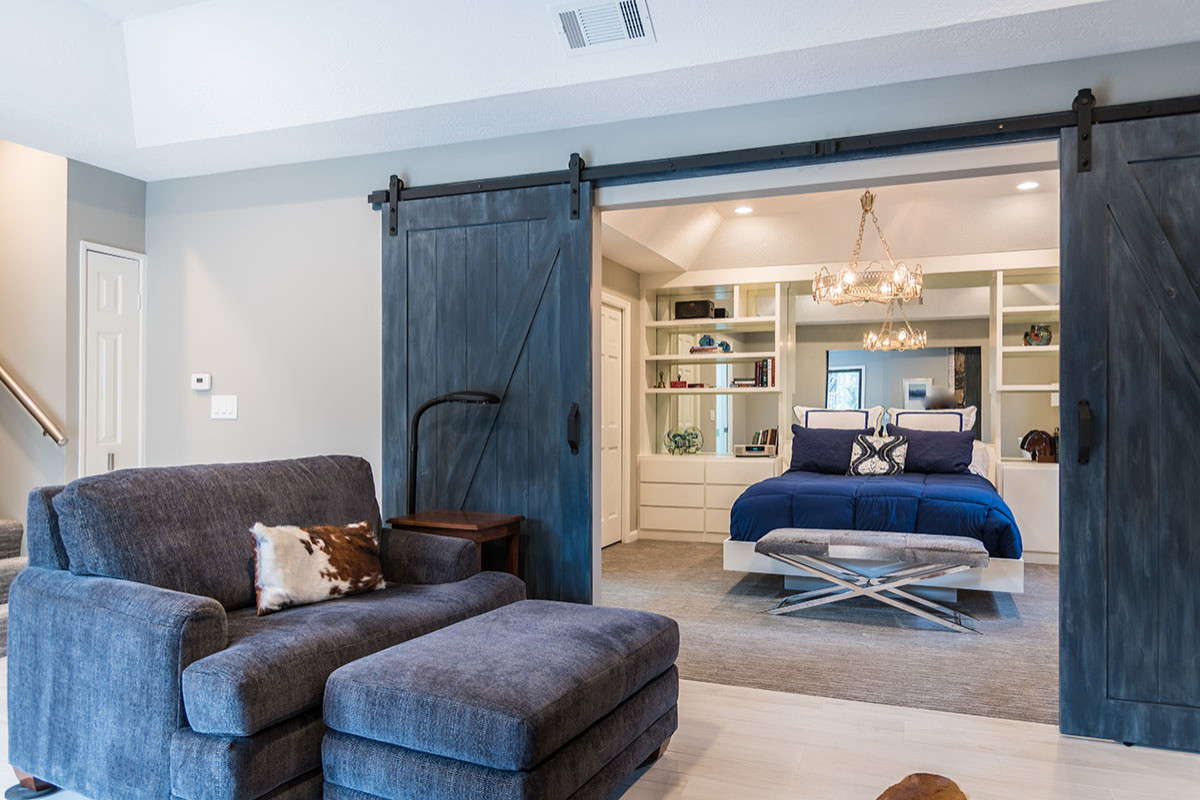
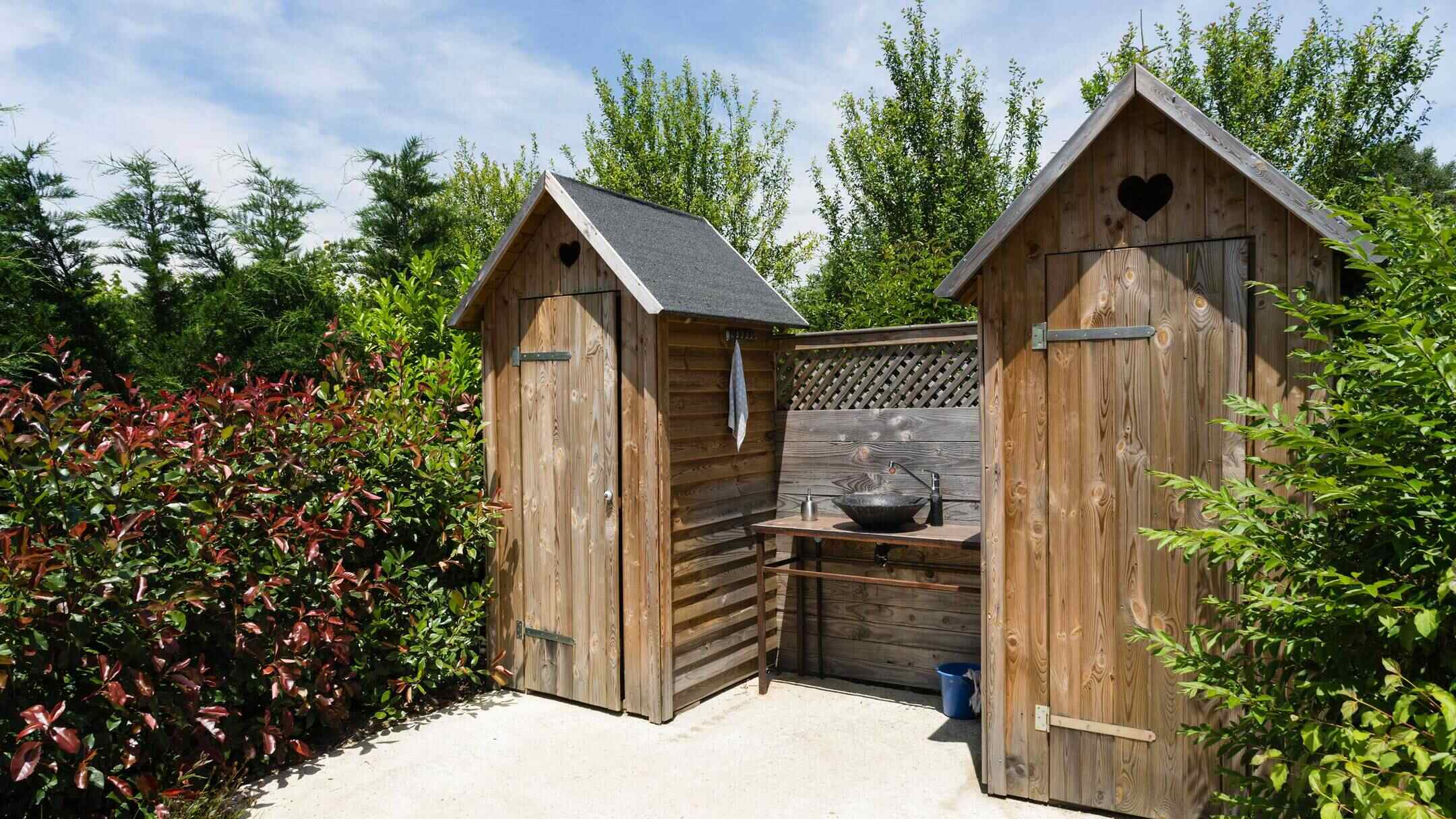
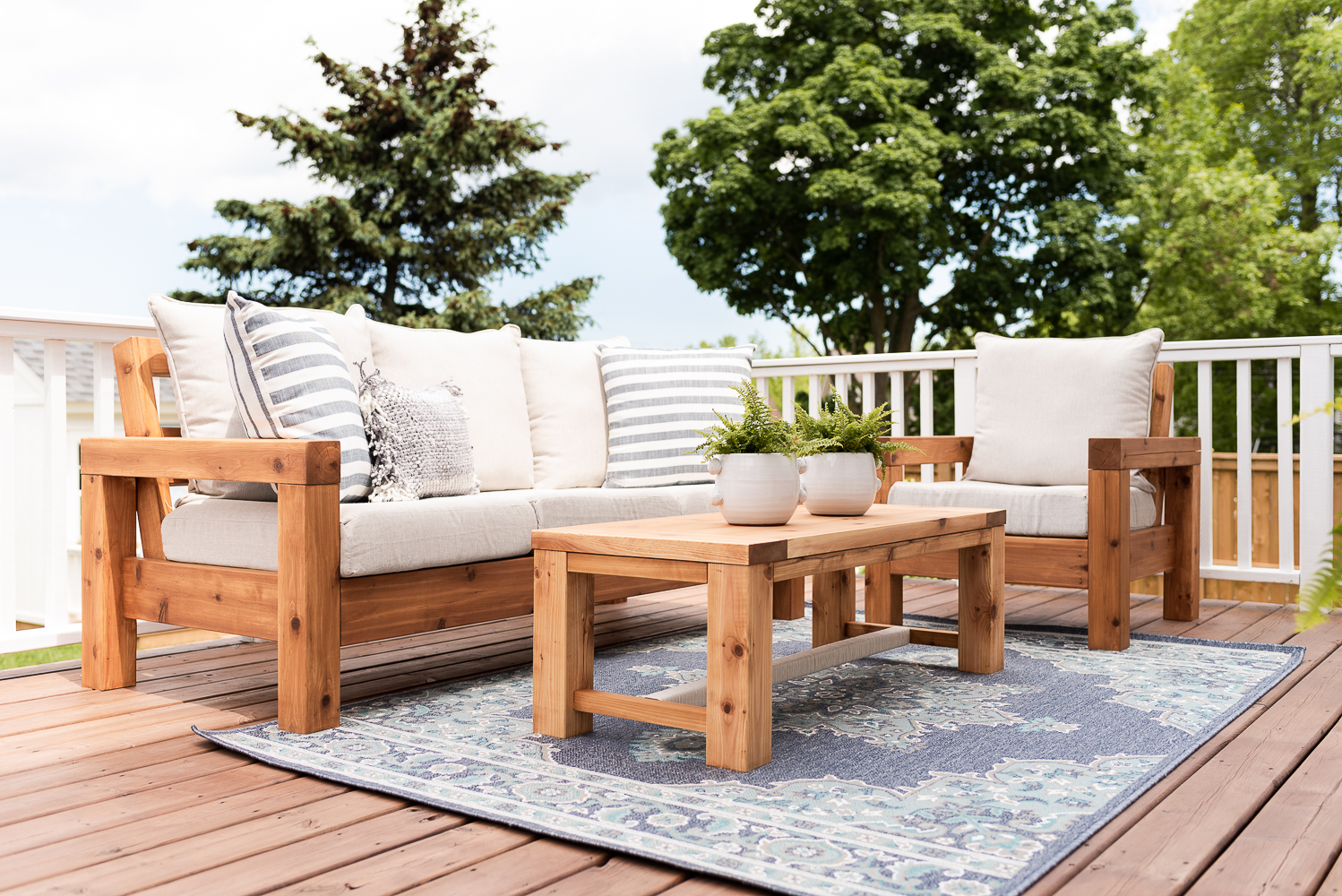

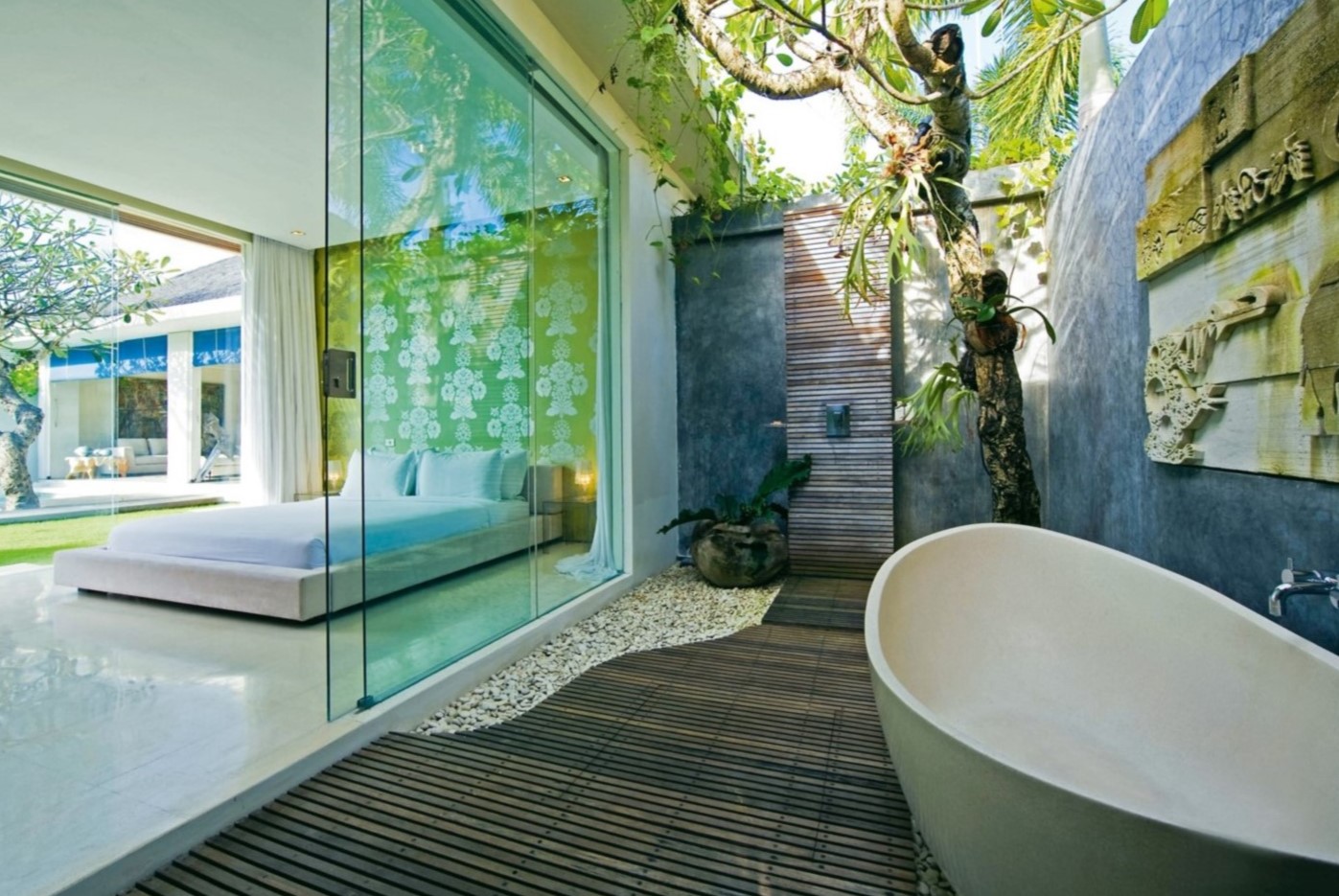
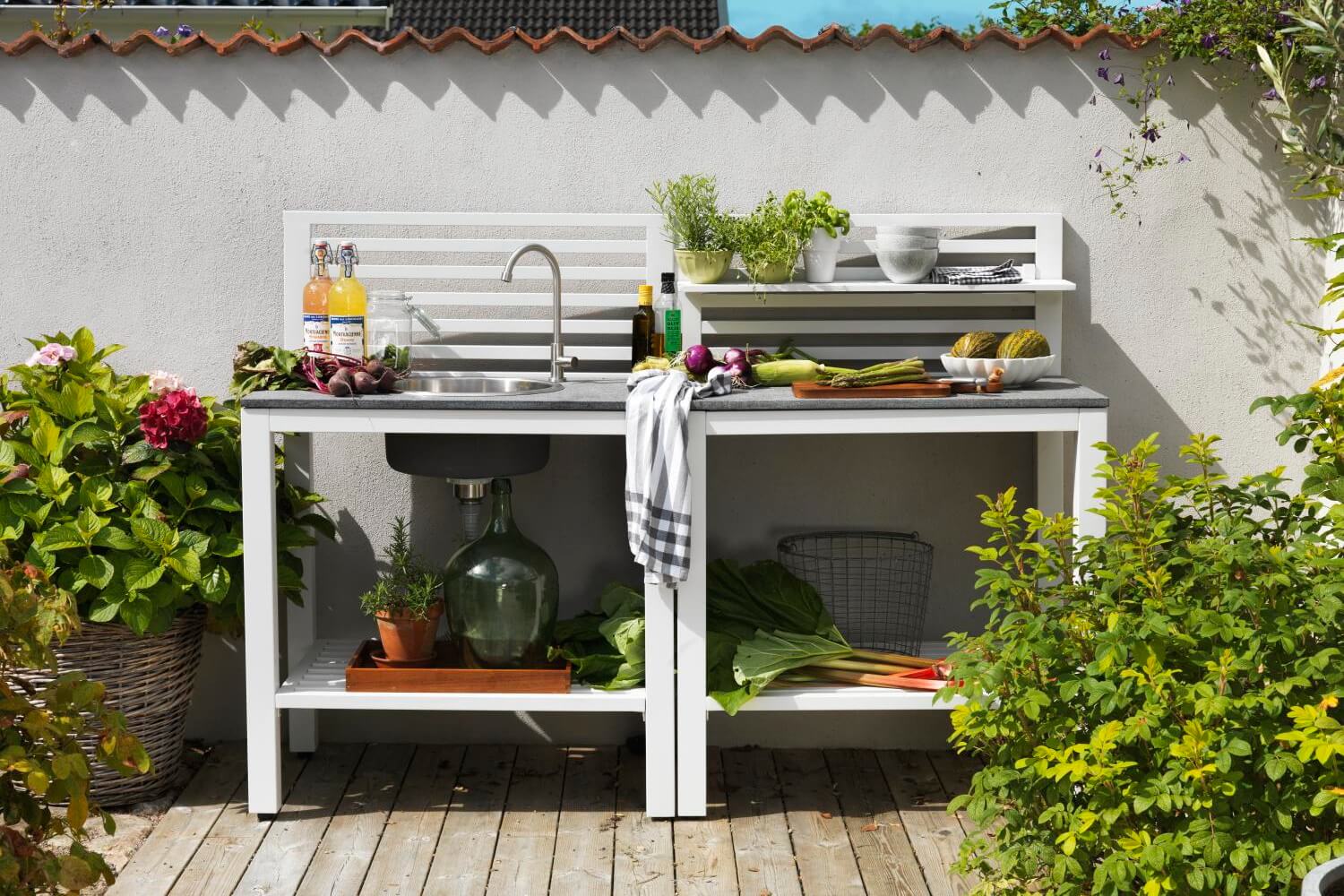
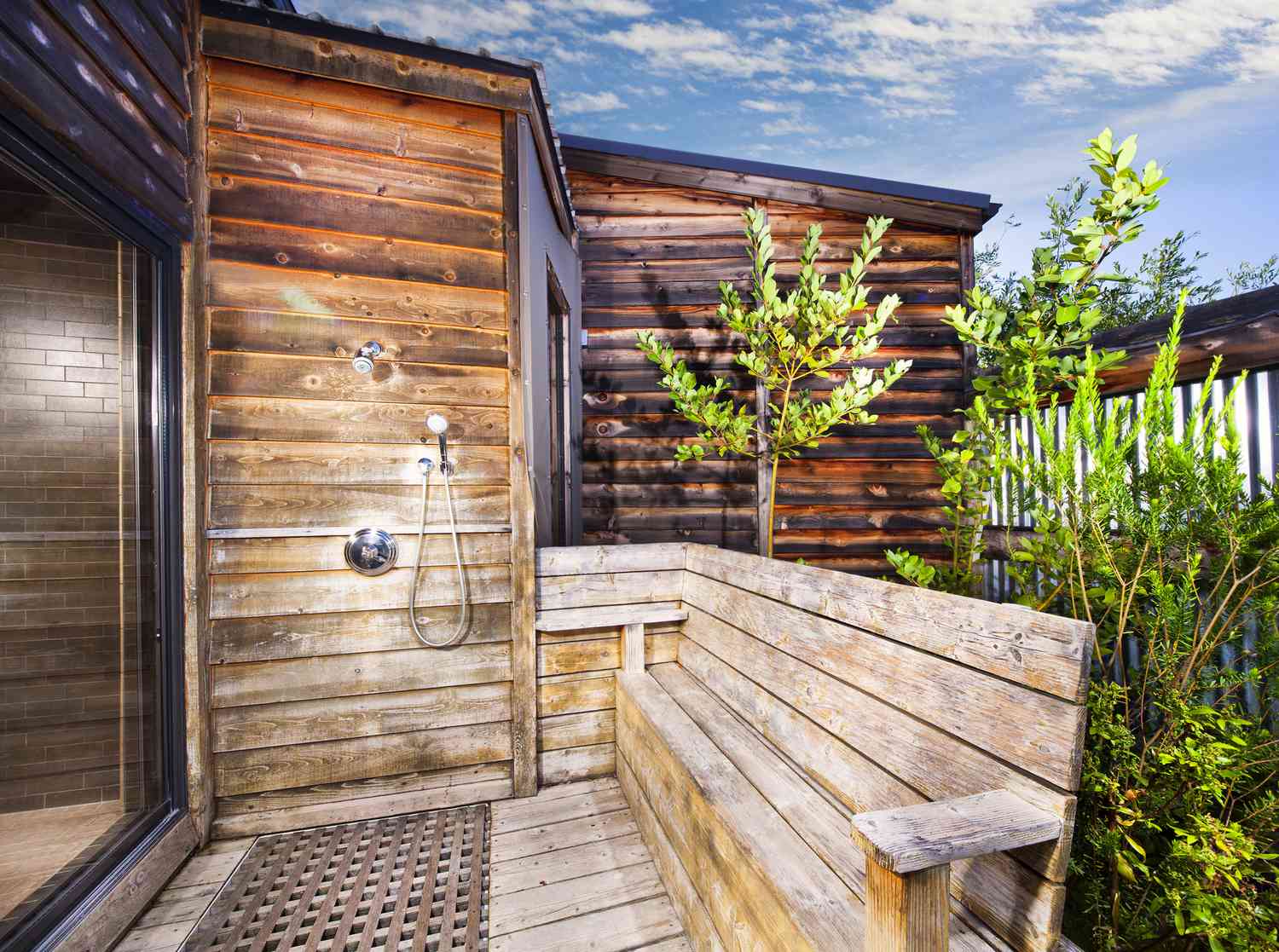
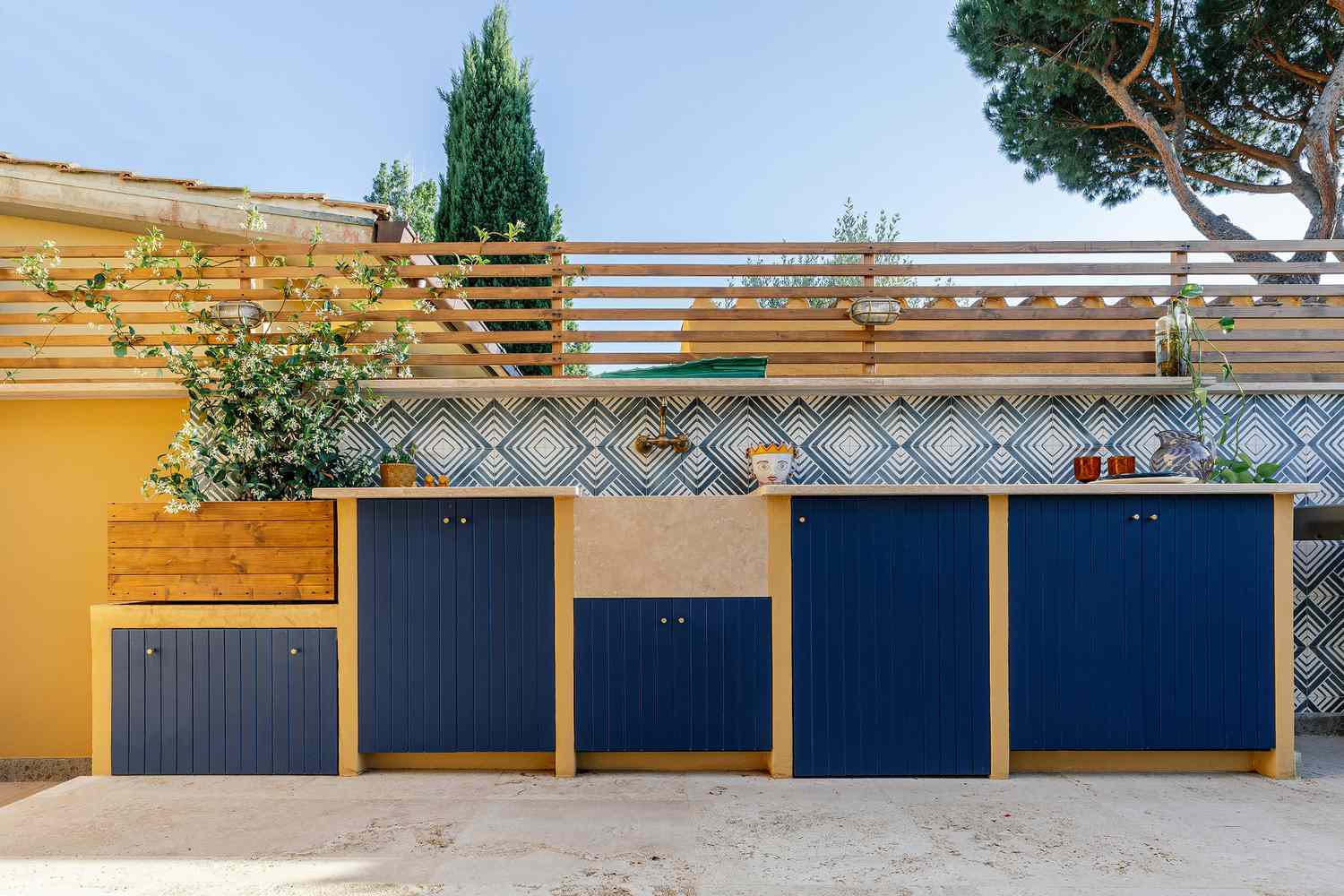

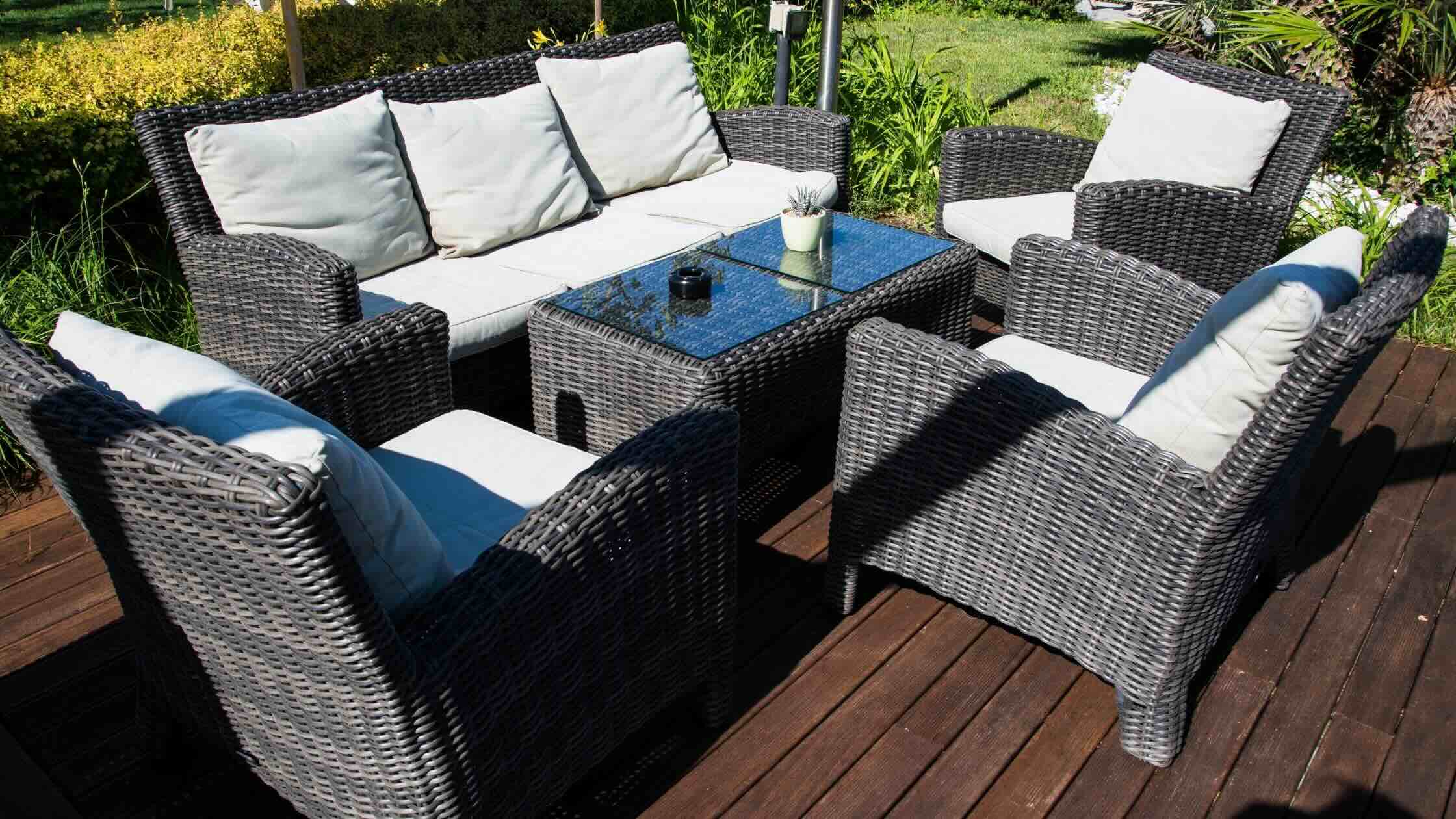
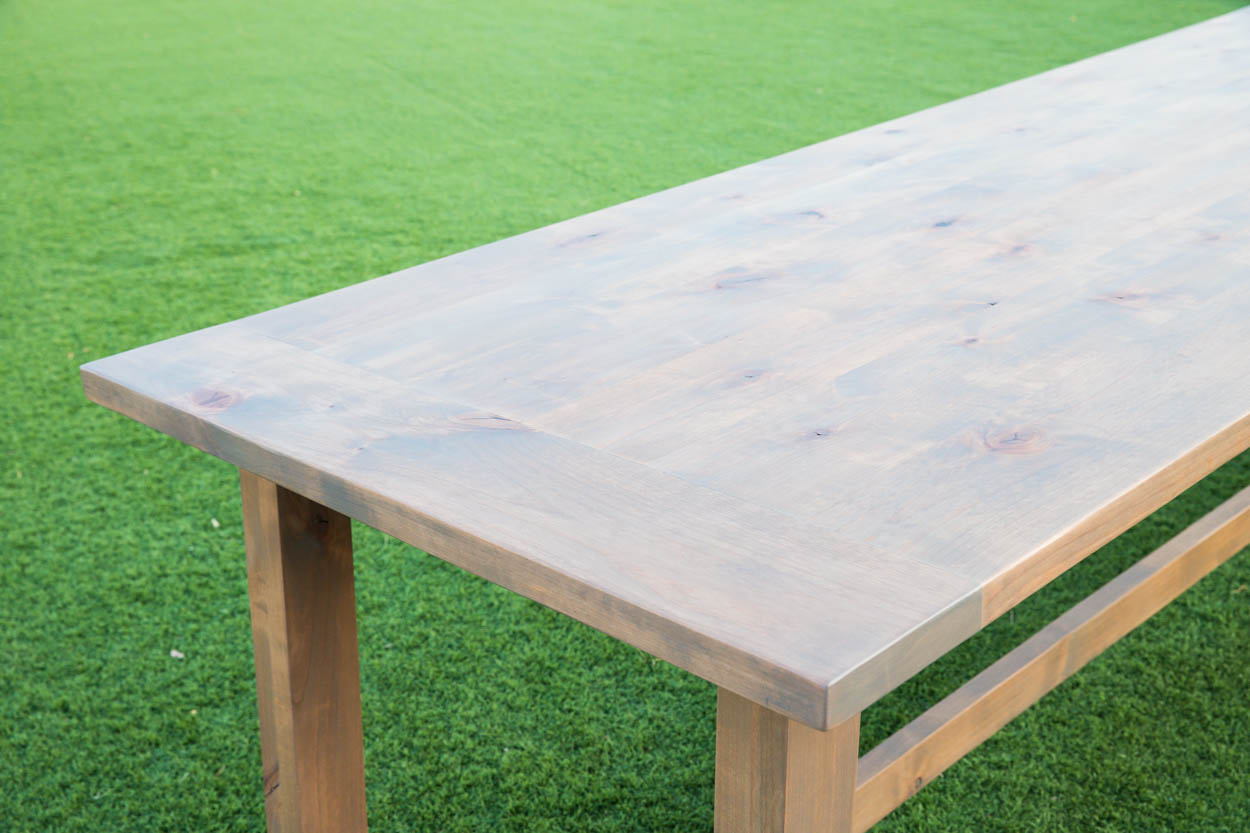
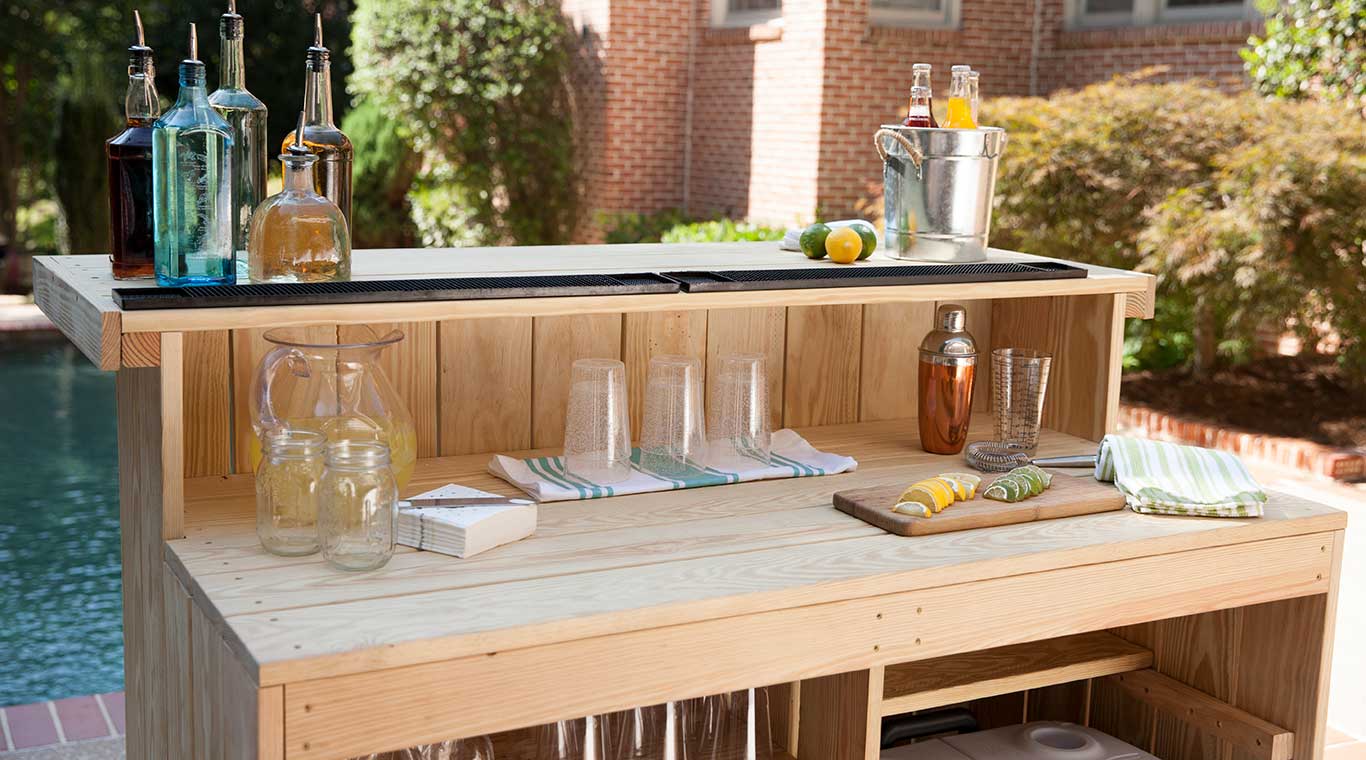

0 thoughts on “Build An Outdoor Room This Weekend”